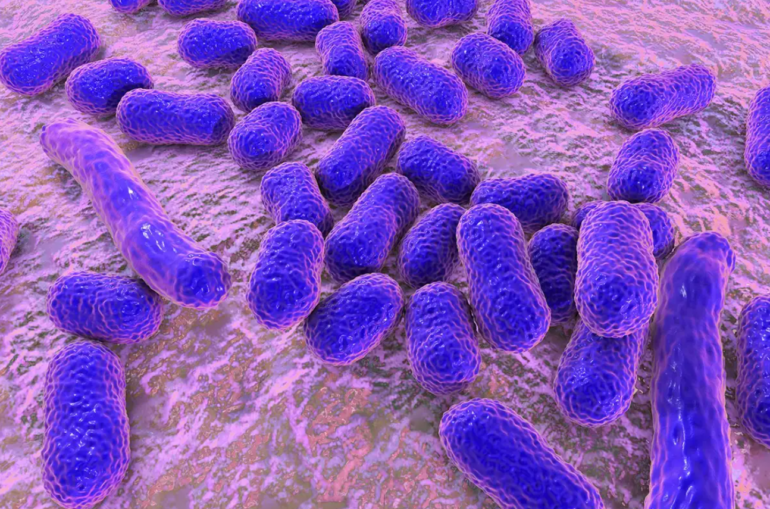TL;DR:
- A machine learning model identifies potent ruthenium-based antibiotic drug candidates.
- With just 288 compounds in its training set, the algorithm scans millions of structures.
- Promising candidates display nearly six times greater antibiotic activity than the training set.
- Bacterial resistance to traditional antibiotics prompts exploration of metal-based antimicrobials.
- Ruthenium complexes offer biocompatibility and low toxicity, currently investigated in cancer trials.
- The combinatorial chemistry approach yields 288 ruthenium compounds tested against MRSA.
- Machine learning predicts antibacterial activity in a virtual library of 77 million ruthenium complexes.
- Follow-up studies aim to validate predictions and understand unique antibiotic mechanisms.
Main AI News:
In a breakthrough development for the pharmaceutical industry, a machine learning model has recently emerged as a powerful tool for identifying potential ruthenium-based antibiotic drug candidates. With a limited training set of just 288 antibacterial organometallic compounds, this innovative algorithm combed through millions of molecular structures, pinpointing those exhibiting the highest efficacy against resistant bacterial strains. Astonishingly, the top candidates displayed nearly sixfold greater antibiotic activity compared to the compounds within the training set.
Antibiotics have long been hailed as the bedrock of modern medicine, playing a pivotal role in various medical treatments. As Angelo Frei, the lead author of this pioneering research at the University of Bern in Switzerland, affirms, “Antibiotics have become a cornerstone of most modern medicine, as many hospital treatments rely on antibiotics as a measure to control infection.” However, the escalating issue of bacterial resistance to traditional antibiotics has become a formidable challenge in the healthcare sector. Recognizing this alarming trend, researchers have turned their attention to the potential of metal-based antimicrobials, specifically ruthenium complexes.
Compared to conventional organic carbon-based compounds, metal compounds exhibit a remarkable tenfold higher likelihood of being effective against bacteria, all without posing a greater threat to human health. As Frei elucidates, “They represent a vast compound class that has remained largely unexplored for its use in medicine.” Additionally, the simplicity of synthesizing ruthenium compounds renders them highly attractive as candidates for drug development.
Frei and his team employed a combinatorial chemistry approach, devised by co-author Wee Han Ang, to produce a library of 288 ruthenium compounds. These compounds were subsequently screened against methicillin-resistant Staphylococcus aureus (MRSA). Remarkably, a significant portion, amounting to 9.4%, exhibited antibacterial activity. Leveraging this data, machine-learning models were trained to predict the activity of these compounds against MRSA. Following these initial steps, researchers generated a virtual library of 77 million ruthenium complexes. The algorithm then sifted through this vast library, identifying two million structures with the potential for antibacterial activity. To validate these predictions, a subset of 54 structures was synthesized and tested in the laboratory against MRSA, with an impressive 53.7% of them exhibiting activity. This represents a remarkable 5.7-fold increase in the hit rate compared to the initial screening phase.
Concepción Gimeno, an expert in metallodrugs at the Institute of Chemical Synthesis and Homogeneous Catalysis in Zaragoza, Spain, elucidates, “Organometallic compounds often have distinct mechanisms of action compared to traditional organic antibiotics, which could be advantageous to overcome existing resistance mechanisms.” Ruthenium complexes offer additional advantages, including biocompatibility and a remarkably low toxicity profile in comparison to other metal compounds. In fact, ruthenium complexes are already undergoing clinical trials for cancer treatment.
Nils Metzler-Nolte, a bioinorganic chemistry expert at Ruhr University Bochum, Germany, commends the versatility of this groundbreaking method. He notes, “Building upon previous work in combinatorial chemistry by the Ang group, a simple one-pot reaction gives over 250 compounds with vastly different 3D shapes and properties.” This extensive diversity in chemical structures is a compelling aspect of organometallic complexes and could potentially yield antibiotics with novel modes of action.
While ruthenium is relatively costly and rare, the synthesis process involves only one to three steps, making it a cost-effective option compared to commercially available drugs. Metzler-Nolte emphasizes that the primary cost driver in drug discovery and development lies in the extensive clinical trials required.
In the future, follow-up studies will encompass a series of experimental and computational validations to corroborate and refine the predictions. This will be followed by synthesis, characterization, biological testing, iterative design, and more. Molecular simulations will also play a crucial role in unraveling the unique antibiotic mechanisms of these metal complexes and understanding any potential resistance mechanisms. As Frei cautions, “Some studies show a very low – even non-existent – development of resistance for metal-based compounds, but I think it would be foolish to underestimate bacteria.” The overarching goal is to generate an extensive dataset and larger libraries, covering a broader range of elements in the periodic table and predicting specific properties such as activity and toxicity levels. This ambitious endeavor holds the promise of ushering in a new era of antibiotic drug discovery, potentially addressing the pressing issue of antibiotic resistance.
Conclusion:
This innovative machine learning approach holds significant promise in the pharmaceutical market, revolutionizing the discovery of antibiotic drugs. With the ability to identify ruthenium-based candidates with exceptional potency, biocompatibility, and low toxicity, it addresses the growing concern of bacterial resistance. This breakthrough could reshape the antibiotic landscape and pave the way for novel treatments in the healthcare industry.

